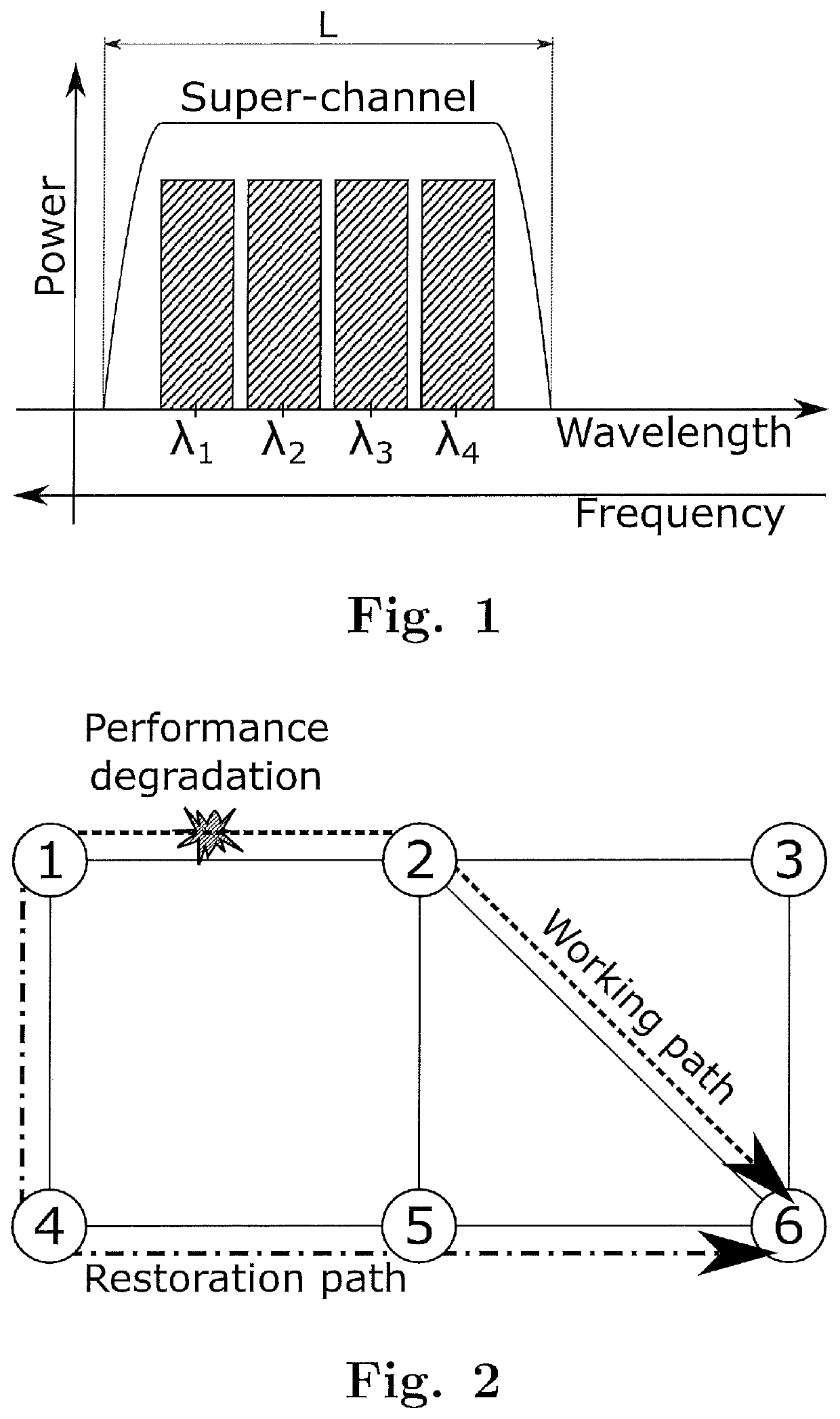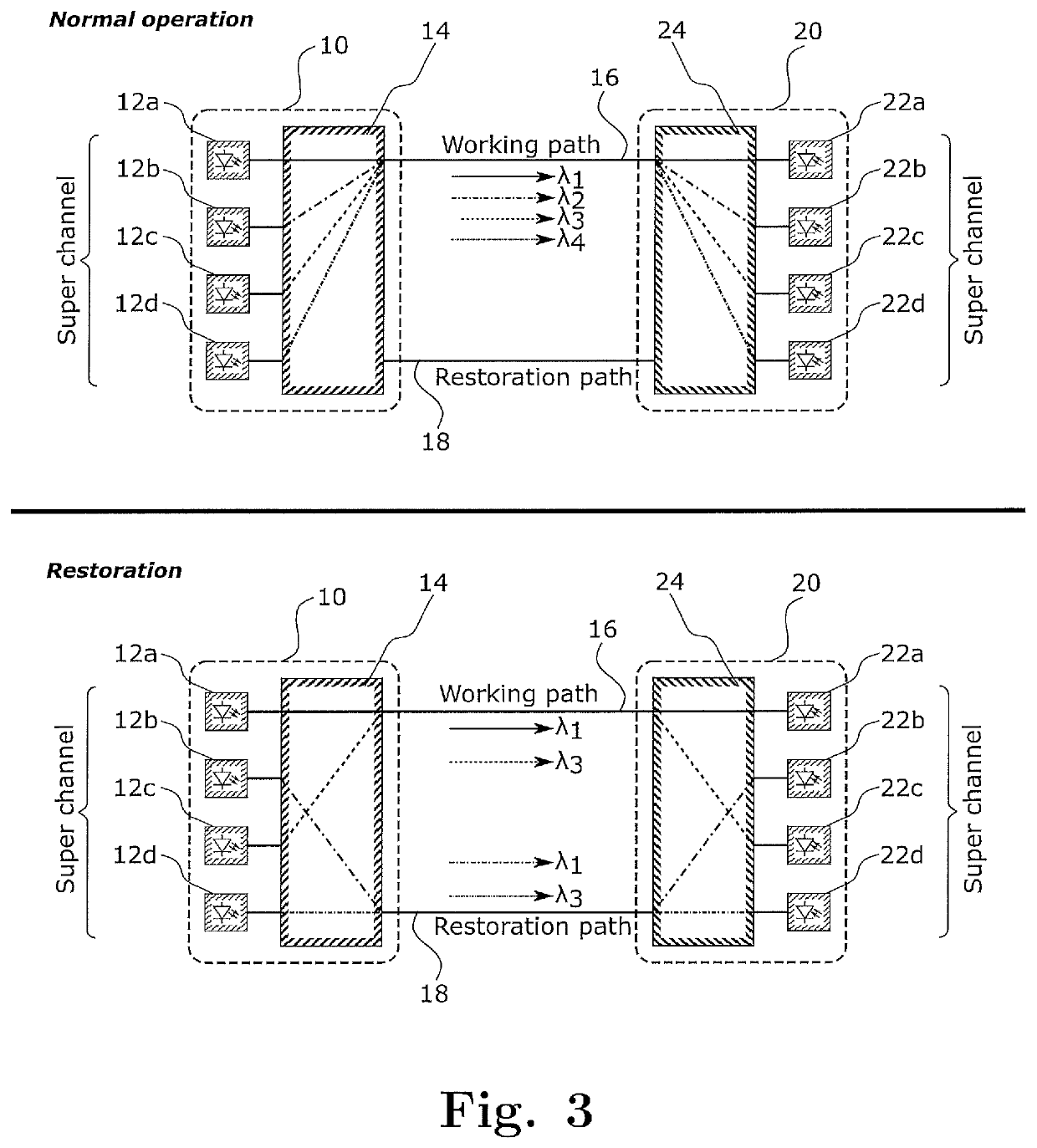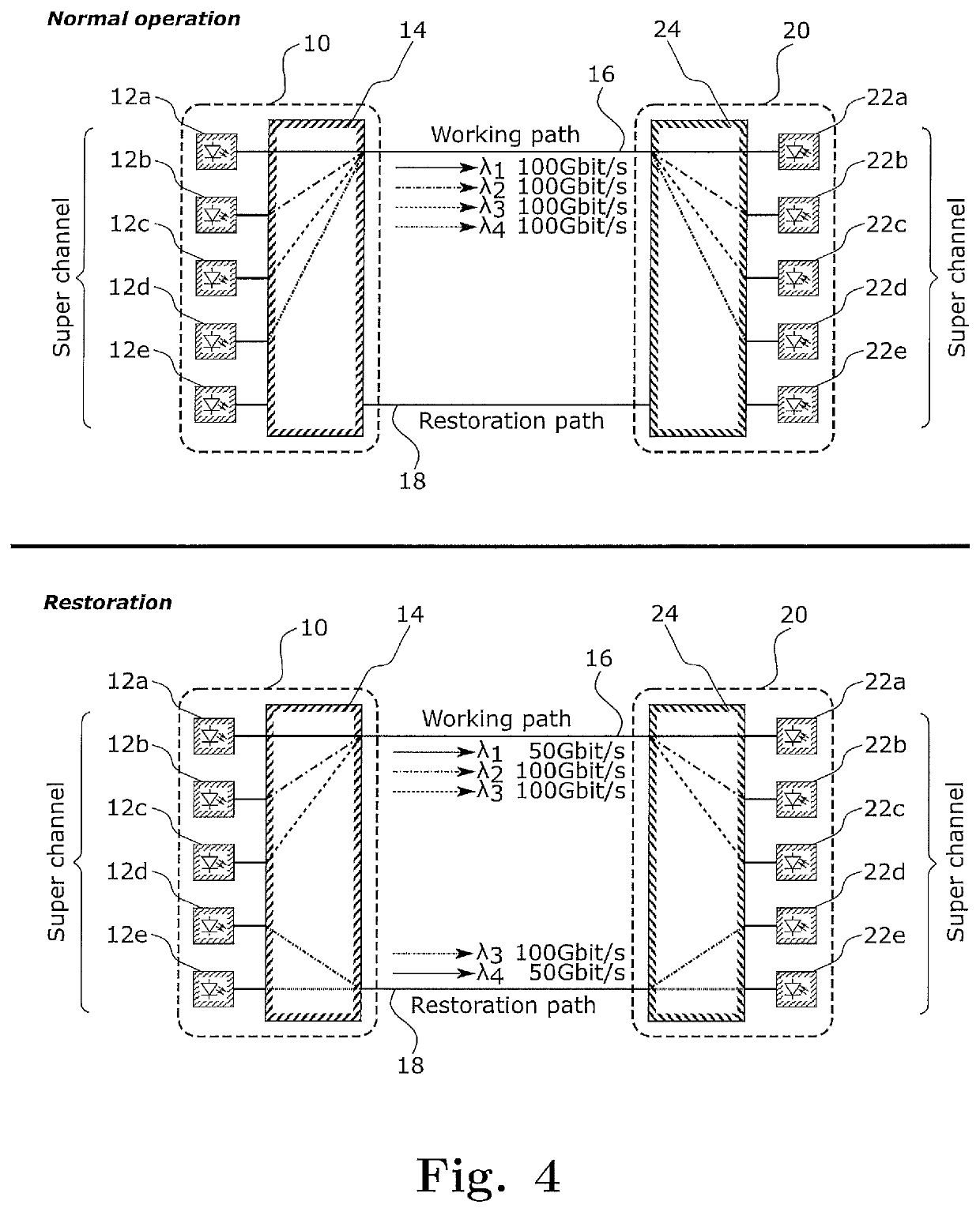Subcarrier diversity in optical communication systems
a technology of optical communication system and carrier, applied in the field of optical communication system, can solve the problems of violation of service level agreement, affecting the transmission rate of data in optical network, and inevitably exposed failures of data transmission, so as to achieve the effect of reducing the transmission rate and facilitating the operation
- Summary
- Abstract
- Description
- Claims
- Application Information
AI Technical Summary
Benefits of technology
Problems solved by technology
Method used
Image
Examples
Embodiment Construction
[0067]For the purposes of promoting an understanding of the principles of the invention, reference will now be made to a preferred embodiment illustrated in the drawings, and specific language will be used to describe the same. It will nevertheless be understood that no limitation of the scope of the invention is thereby intended, such alterations and further modifications in the illustrated apparatus and such further applications of the principles of the invention as illustrated therein being contemplated as would normally occur now or in the future to one skilled in the art to which the invention relates.
[0068]FIG. 2 schematically shows an optical network comprising six nodes 1 to 6 connected by optical links. According to an embodiment of the method of the invention, a data stream is transmitted from a first location at node 1 to a second location at node 6 along a working path via node 2, wherein the data stream is transmitted in the form of a super channel like that shown in FI...
PUM
 Login to View More
Login to View More Abstract
Description
Claims
Application Information
 Login to View More
Login to View More - R&D
- Intellectual Property
- Life Sciences
- Materials
- Tech Scout
- Unparalleled Data Quality
- Higher Quality Content
- 60% Fewer Hallucinations
Browse by: Latest US Patents, China's latest patents, Technical Efficacy Thesaurus, Application Domain, Technology Topic, Popular Technical Reports.
© 2025 PatSnap. All rights reserved.Legal|Privacy policy|Modern Slavery Act Transparency Statement|Sitemap|About US| Contact US: help@patsnap.com



